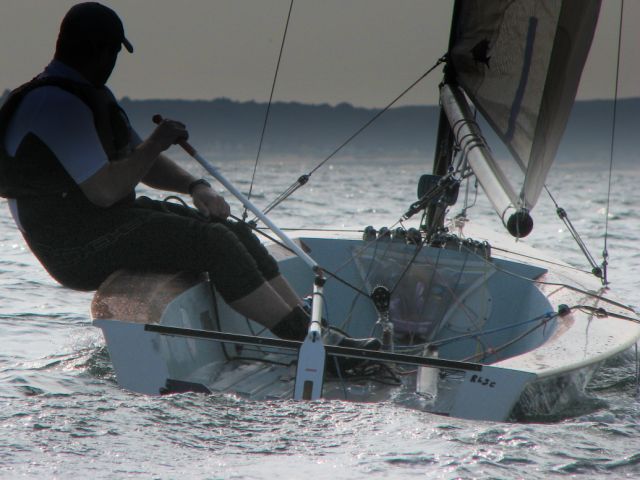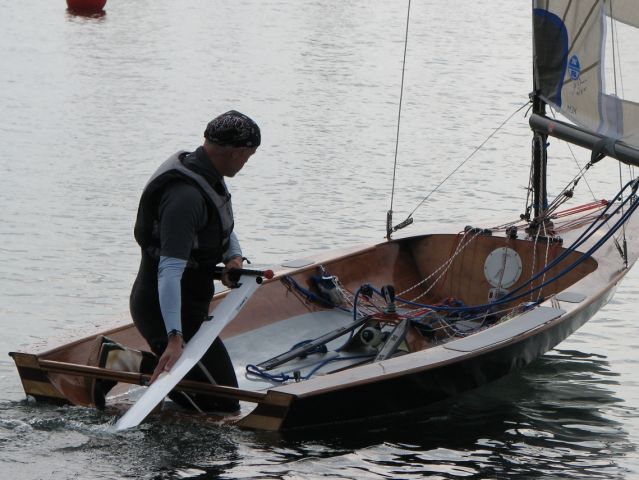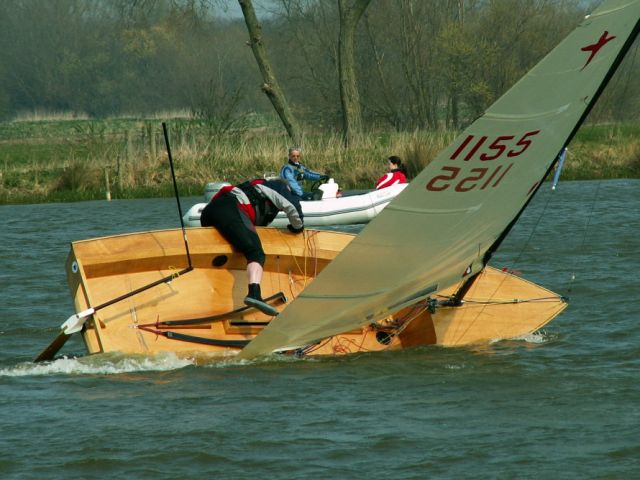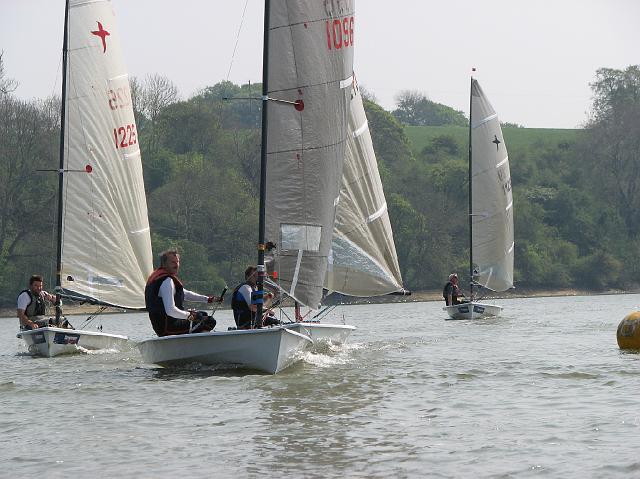The first Phantoms were designed by Paul Wright & Brian Taylor in 1971 and were all wooden. The wooden Phantom remained until the 1990's when Jeff Vanderborght introduced the Plastic Phantastic as they were known. This also allowed for the introduction of composite hulls, where the hull was plastic and the upper decks and cockpit were still made from wood.
It is fair to say that at the very top of the fleet composite & wooden Phantoms rarely trouble the front runners, some are still very competitive at club level. There is also a Classic Phantom section of the fleet dedicated to the older Phantoms. You can find information about the classics from Mike Potter who regularily resides in the forum under the name Low Buoyancy Man.
The Phantom does float fairly high on its side in the water during a capsize, and can trouble some sailors in how to reach the centre board when they are in the water. Because of this Mike designed the low buoyancy version. This bascially leaves the floor buoyancy intact but cuts away parts of the side tanks to allow water to rush in when capsized. This means that the boat floats lower making it easlier to recover. The water then rushes out afterwards.

This image shows a composite Phantom. You can see that the side tanks meet the floor at a steep angle. This is still a self draining cockpit as it has a floor tank. Most older Phantoms are not self draining and will retain water post capsize.

This shows a wooden Phantom with a dish layout similar to the plastic Phantoms. This one was built by Claridge and these tend to be be the most competitive of the wooden Phantoms.

This photo while unfairly showing a capsize, does clearly show the cockpit layout of a wooden Phantom. This boat is only a few years old and shows that wooden Phantoms are still being built. Plans can be obtained from the designer for the self-build enthusiast.








